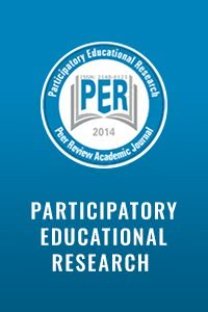The Effect of STEM Applications On Students’ Science-Engineering Perceptions
This study was conducted to find out the effects
of STEM applications on students’ perceptions of science and engineering. The
study was conducted with 26 7th graders in a secondary school in Samsun. One
group pre test, post test experimental design was used in the study. During the
process of STEM applications within the scope of the unit of electric energy, a
form consisting of 12 open ended questions was used, analyzed and evaluated.
When the data obtained were analyzed, it was found that as a result of STEM
education, students’ perceptions of engineering changed positively, they were
able to make more correct definitions of engineering and they were able to
state the basic objectives of engineering. As a result of the applications, it
was found that students were able to tell the elements of the engineering
design process and the stages engineers follow while designing products and in
addition they were able to express the importance of science for engineering
while presenting the spiral relationship between the concepts of
science-engineering-technology. Schools should allocate budget for STEM
applications which will give students experiences about forming a sense of
production, gaining skills related with hands, taking responsibilities and
sharing and both students and teachers should be encouraged about STEM
applications.
Keywords:
STEM Science, Engineering,
___
- Akgunduz, D. (2016). A Research About The Placement Of The Top Thousand Students in STEM Fields in Turkey Between 2000 and 2014. Eurasia Journal of Mathematics, Science & Technology Education, 12(5), 1365-1377
- Akçay, H., Yager R. E., Iskander M. S., Turgut, H., (2010). Change in student beliefs about attitudes toward science in grades 6-9. Asia-Pacific Forum on Science Learning and Teaching, 1(1),11, p 1.
- Aslan O., Yalçın N., & Tasar, M.F., (2009). The Views of the Teachers of the Science And Technology on the Nature of Science. Ahi Evran University Journal of Kırşehir Education Faculty. 3(10), 1-8
- Bell, R. L. (2008). Teaching the Nature of Science through Process Skills. Boston: Allyn and Bacon.
- Bybee, R.W. (2010). What is STEM education? Science, 329, 996. doi: 10.1126/science.1194998
- Corlu, M.S., Capraro, R.M., & Capraro, M.M. (2014). Introducing STEM Education: Implications for Educating Our aTeachers For the Age of Innovation. Education And Science. 171(39)
- Coştu, B., Ünal, S., & Ayas, A., (2007). The Use of Daily-Life Events in Science Teaching. Ahi Evran University Journal of Kırşehir Education Faculty. (KEFAD). 8(1), 197-207
- Daugherty, J. (2012). Infusing engineering concepts: Teaching engineering design. National Center for Engineering and Technology Education. Retrived From http://files.eric.ed.gov/fulltext/ED537384.pdf . (02.08.2016)
- Ercan, S. (2014). Engineering Discipline Information Form. Published Doctoral Thesis. Marmara University.
- Gülhan, F., & Şahin F. (2016). The Effects of Science Technology- Engineering Mathematics (STEM) İntegration on 5th Grade Students’ Perceptions and Attidutes Towards These Areas. International Journal Of Human Sciences, 13(1) 602-620. doi:10.14687/ijhs.v13i1.3447
- Moore T., & Richards L. G. (2012). P-12 Engineering Education Research And Practice. Introduction To A Special Issue of Advances in Engineering Education, 3(2), 1-9.
- National Research Council (NRC). (1996). National Science Education Standards. Washington, DC: National Academy Pres.
- National Research Council [NRC]. (2012). A Framework for k-12 science education: practices, crosscutting concepts, and core ideas. Washington DC: The National Academic Press. http:77nap.edu/13165. 90. (02.08.2016)
- P21. (2015). Partnership For 21st Century Learning 2015. Retrieved From http://www.p21.org/storage/documents/P21_framework_0515.pdf
- Primary Education İnstitutions Science Lesson Teaching Program, TTKB, 2013. Ankara. Retrived From http://ttkb.meb.gov.tr/www/guncellenen-ogretim-programlari/icerik/151 (03.08.2016)
- Richardson, D., & Houston, C. W. (2006). A Study Of The Impact Of An Informal Science Education Program On Middle School Students’ Science Knowledge, Science Attitude, STEM High School And College Course Selections, And Career Decisions. 115-118 Retrived From https://www.lib.utexas.edu/etd/d/2006/ricksm81757/ricksm81757.pdf
- Savran Gencer, A. (2005). Scientific and Engineering Practices in Science Education: Twirly Activity, Journal of Research-Based Activities. (ATED). 5(1), 1-19.
- The Scientific and Technological Research Council of Turkey [TÜBİTAK]. (2004). National Science and Technology Policy 2003-2023 Strategy Document, Retrieved from www.tubitak.gov.tr/tubitak_content.../Vizyon2023 Strateji Belgesi. (02.08.2016)
- Yılmaz, E., Türkoğuz, & S., Şahin, M. (2014). Teachers’ Views about Misconceptions of Solar System and Space Subjects and Its Effect on Daily Life. Dokuz Eylul University Buca Faculty of Education. 37
- ISSN: 2148-6123
- Yayın Aralığı: Yılda 6 Sayı
- Başlangıç: 2014
- Yayıncı: Özgen KORKMAZ
